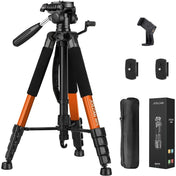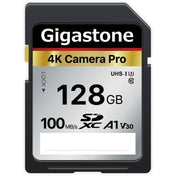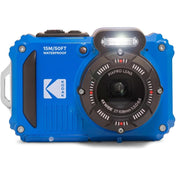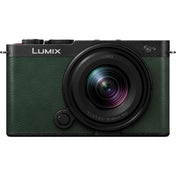The journey of photography has been nothing short of remarkable. From the early days of film photography to the breathtaking innovations we see in digital cameras today, we have witnessed an unprecedented evolution in technology, artistry, and accessibility. In this article, we will explore the fascinating transformation of cameras, focusing on the advancements that have reshaped how we capture and share our worlds. Whether you are a professional photographer or an amateur enthusiast, understanding this evolution can deepen your appreciation for the art of photography.
The Birth of Photography: Film Cameras
The history of photography dates back to the early 19th century with the invention of the first camera. The earliest cameras were quite rudimentary, capturing images on glass plates. Over time, these early technologies paved the way for film cameras, which dominated the photography landscape for more than a century.
Film cameras used light-sensitive film to capture images, creating a tangible moment that could be developed and printed. This analog process allowed photographers to harness their creativity, from composing shots to manipulating exposure. The introduction of roll film in the late 1800s revolutionized photography, allowing people to take multiple shots without the need for cumbersome glass plates.
Classic Film Cameras and Their Impact
Throughout the 20th century, numerous iconic film camera models emerged, from the Leica to the Nikon F. Each of these cameras offered unique features and capabilities, enhancing the art of photography. As technology advanced, features like interchangeable lenses and manual controls became standard, allowing photographers to experiment and achieve diverse looks in their work.
Film photography also fostered a vibrant community. Enthusiasts shared tips, tricks, and developments via forums and magazines, creating a culture that cherished the craft. The anticipation of developing film and waiting for prints is a nostalgic experience many photographers still remember fondly.
The Shift Begins: Digital Cameras
The late 20th century heralded a significant turning point in the evolution of cameras: the shift from film to digital. Digital cameras began to emerge in the late 1970s, but it wasn't until the late 1990s and early 2000s that they gained widespread popularity.
Digital photography relies on electronic sensors and digital storage media, making it a game changer for photographers everywhere. With the advent of memory cards, photographers no longer had to worry about running out of film or incurring developing costs, allowing for quick experimentation in real-time.
The Advantages of Digital Over Film
- Instant Review: One of the most notable benefits of digital cameras is the ability to review photos immediately after taking them. This feature helps photographers adjust their settings on the spot, leading to more successful shots.
- No Film Costs: With digital cameras, there are no additional costs for film and development. Once purchased, digital cameras enable virtually unlimited photography.
- Editing Flexibility: Digital images can be easily edited using software. This has opened up a new realm of possibilities for photographers, allowing for corrections and creative manipulations that were not easily achievable with film.
The Rise of DSLRs and Mirrorless Cameras
As digital technology advanced, so did the sophistication of cameras. Digital Single-Lens Reflex (DSLR) cameras became popular amongst both professionals and hobbyists due to their versatility and advanced features. Offering the true-to-eye viewing experience through a reflex mirror system, DSLRs allowed photographers to see exactly what they were capturing through the lens.
Mirrorless cameras soon followed suit, boasting compact designs without the mirror mechanism that DSLRs require. This innovation has made cameras lighter and more streamlined, catering well to a community that values portability as well as performance.
Adapting to New Technologies
As cameras evolved, so did the accessories that enhance their use. For example, the Canon adapter for DSLR lenses has opened up opportunities for photographers looking to use various lenses across different camera bodies. This adaptability enables photographers to explore a wide range of creative options, further enhancing their capability to capture stunning images.
The Influence of Smartphones
The rise of smartphones has dramatically impacted photography, democratizing the art form. With built-in high-quality cameras and user-friendly software, mobile photography has made it easy for anyone to take professional-quality images. Social media platforms have fueled this trend, encouraging sharing and collaboration among photographers of all skill levels.
Smartphone manufacturers continuously push the envelope with features like portrait mode, night mode, and advanced computational photography, further blurring the lines between professional and amateur photography. While some traditionalists may lament the shift away from 'real' photography, it is undeniable that smartphone cameras have transformed how we document our lives.
Advancements in Camera Technology
The evolution of cameras is not limited to the type of film or sensor used; it also encompasses cutting-edge features that redefine photography. Innovations such as image stabilization, dual pixel technologies, and artificial intelligence significantly enhance image quality and usability.
Image Stabilization
Image stabilization technology helps to reduce the effects of camera shake, especially in low-light situations or while capturing fast-moving subjects. This technology is crucial for both videographers and photographers alike, ensuring crisp and clear shots without much effort.
Artificial Intelligence in Photography
AI technology is also making its way into cameras. Many modern cameras now include features that assist with focusing, recognizing scenes, and even suggesting optimal settings based on the environment. This makes photography more accessible for beginners while also providing advanced options for seasoned photographers.
The Future of Photography
As we look ahead, the progression of camera technology shows no signs of slowing. Emerging technologies such as 360-degree cameras, virtual reality (VR), and drones are expanding the horizons of photography, enabling new forms of expression and storytelling. Each technological advance opens new doors, enriching our experience and connection to the art of photography.
Ethical Considerations
With great power comes great responsibility. As photography continues to evolve, ethical considerations arise regarding privacy, consent, and the representation of subjects. Photographers must navigate these challenges thoughtfully, striving to create while maintaining respect for the lives and environments they capture.
Photography as Art and Documentation
The transition from film to digital photography has not only heightened the accessibility of the medium but has also blurred the lines between art and documentation. Photographers today, leveraging advanced technology like the Canon adapter for DSLR lenses, can enhance their creative expression. This evolution has allowed for new techniques in storytelling, poignant narrations of social issues, and more personal depictions of everyday life.
Embrace the Journey
The evolution of cameras is an inspiring tale of innovation, creativity, and artistic expression. Film may hold a nostalgic place in the hearts of many photographers, but the rise of digital photography has opened up a world of possibilities. Whether you’re a seasoned photographer or just starting your journey, understanding the evolution of camera technology can enhance your appreciation for the craft and inspire you to continue exploring new horizons. As we boldly step forward, let's embrace these advancements while honoring the legacies of the past. The camera is not just a tool; it is a bridge connecting our memories, experiences, and stories for generations to come.











